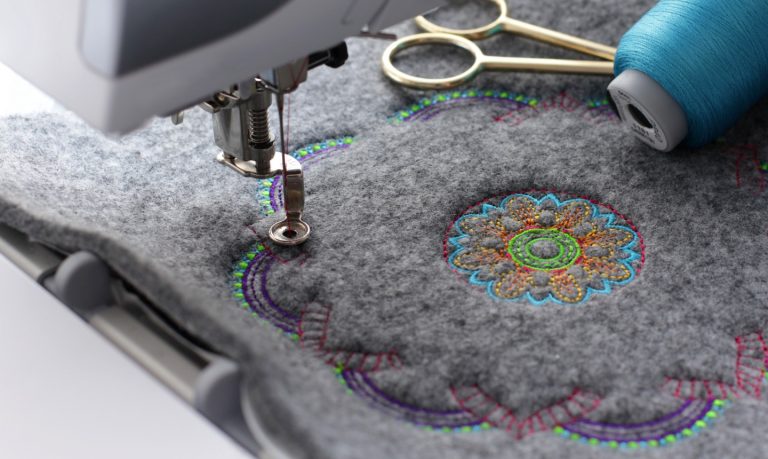Customized Digitizing for Embroidery: Customized to Your Requirements
Customized Digitizing for Embroidery: Customized to Your Requirements
Blog Article
Mastering the Needlework Digitizing Process: Your Ultimate Overview
Needlework digitizing is a meticulous craft that needs accuracy and expertise to equate detailed designs into digital formats for maker needlework. As artisans begin on this trip to understand the embroidery digitizing process, a detailed understanding of the basics sets the structure for quality.

Recognizing Needlework Digitizing Fundamentals
Needlework digitizing basics form the foundation whereupon detailed designs are equated right into machine-readable formats for specific sewing. This first action in the needlework digitizing procedure is crucial for making certain that the last stitched product is a faithful depiction of the original style. Comprehending needlework digitizing basics involves comprehending crucial ideas such as stitch kinds, sew direction, thickness, underlay, and draw compensation.
Sew types play a vital function in determining the aesthetic and textural outcome of the stitched style. By picking the ideal stitch kind, whether it be satin, fill, or running stitch, digitizers can achieve the desired result and improve the total high quality of the needlework. Additionally, sew direction influences the circulation and measurement of the design, while density identifies the spacing and coverage of the stitches.
Furthermore, padding sewing supplies stability to the style by securing the textile and stopping distortion during the embroidery process. Pull payment is one more vital factor to consider to counteract the natural tendency of material to agreement when sewn. Understanding these embroidery digitizing basics is fundamental for creating professional-quality stitched products.
Selecting the Right Digitizing Software Application
Choosing the suitable digitizing software program is a crucial choice that considerably affects the performance and top quality of the needlework digitizing process. Digitizing for Embroidery. When picking the right digitizing software, it is important to consider variables such as the intricacy of designs you intend to create, the user-friendliness of the software program, the level of client support offered, and the compatibility with your embroidery equipment
There are different digitizing software alternatives offered on the market, varying from fundamental programs for newbies to sophisticated software application for professional digitizers. Some popular choices include Wilcom EmbroideryStudio, Hatch Embroidery Software, and PulseID. These the original source software supply a large array of devices and features to aid you develop elaborate designs effortlessly.
Prior to choosing, it is advisable to check out the various software program alternatives via cost-free tests or demos to identify which one best matches your demands. Additionally, reading reviews and seeking referrals from seasoned digitizers can give important understandings into the strengths and weaknesses of each software (Digitizing for Embroidery). By carefully examining your needs and comparing the features of various digitizing software application, you can make an informed choice that boosts your embroidery digitizing workflow
Digitizing Devices and Strategies

Optimizing Design Setup for Needlework
Understanding the intricacies of style settings is fundamental in attaining optimum results in the needlework digitizing process, structure upon the foundation laid by comprehending digitizing tools and strategies. When optimizing layout setups for needlework, it is necessary to consider variables such as stitch type, thickness, underlay, pull settlement, and registration. Enrollment settings straighten various elements of the layout properly, maintaining general style stability.

Troubleshooting Common Digitizing Issues
When running into typical digitizing concerns throughout the embroidery procedure, it is crucial to comprehend the origin and execute efficient options quickly. One usual issue is stitch density problems, where stitches might be as well dense, triggering the textile to tighten, or too thin, bring about spaces in the style. Changing the stitch density setups in the digitizing software can assist resolve this problem.
One more constant obstacle is thread breaks during the needlework process. This can happen as a result of various factors such as wrong stress setups, plain needles, or utilizing low-grade string. Making sure correct maintenance of the needlework equipment, consisting of regular needle modifications and stress changes, can lessen the go to this web-site occurrence of thread breaks.
Furthermore, layout enrollment mistakes can result in misaligned aspects within the needlework style. Examining the design alignment in the digitizing software application and making essential modifications prior to sewing can help in preventing this issue. By resolving these common digitizing issues without delay and properly, you can make sure a smoother embroidery procedure and high-quality finished products.
Final Thought
To conclude, mastering the embroidery digitizing procedure requires a solid understanding of the fundamentals, the appropriate choice of software application, and knowledge of devices and methods. Enhancing layout settings and repairing usual digitizing issues are important actions in making certain premium needlework outcomes. By adhering to these steps vigilantly, one can achieve precision and effectiveness in the digitizing procedure.
Report this page